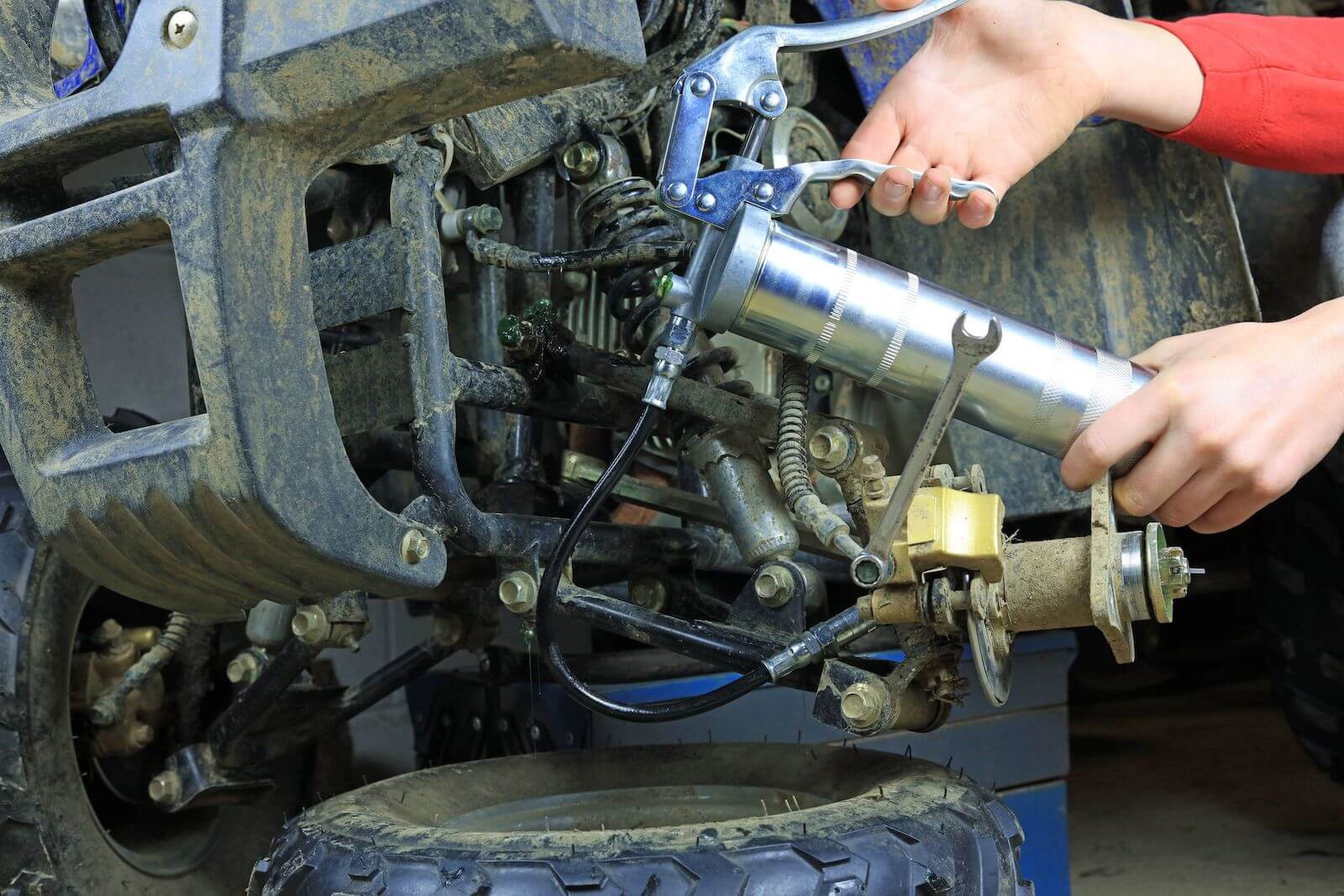Just like the blood flowing in our veins is crucial for our body’s functionality, lubricating oil plays an equally vital role in the efficient functioning and lifespan of machine tools. Proper lubrication reduces friction, wear and tear, and heat generated by moving parts, ensuring smooth operation and longevity of machinery.
Understanding the technical aspects of choosing the right oil is a common challenge faced by machine operators and maintenance teams. Different types of machinery require lubricants with specific properties, viscosity, and temperature ranges, to name a few. Using incorrect or low-quality oil can lead to numerous problems, such as increased friction, overheating, accelerated wear, and even premature machinery failure.
Synthetic oil offers superior performance and protection but is often more expensive, ideal for heavy-duty or high-temperature applications. Mineral oil, derived from petroleum, is a cost-effective option for routine applications, while semi-synthetic oil offers a balance between performance and cost.
This comprehensive guide aims to demystify and simplify the task of choosing the right oil for your machine tools.
Factors to Consider in Choosing the Right Lubricating Oil
Here are a few factors that affect lubricants tools and the lubrication point…
1. Machine Tool’s Specifications
When selecting lubricating oil, your first port of call should be your machine’s specifications.

Manufacturers often provide guidelines regarding the right quantity, type and grade of oil to use for their machines. This information typically includes factors such as the operating speed and temperature the machine is designed to work under.
2. Lubricating Oil Grades
Understanding lubricating oil grades is another crucial aspect. Oil grade essentially refers to oil viscosity, temperature resistance, and stability performance.
High-viscosity oils are thicker, thus providing greater separation between the moving parts. On the other hand, low-viscosity oils flow better at low temperatures. The working temperature of your machine tool will largely determine the oil grade you need.
4. The Working Environment
Lastly, the working conditions of the machine also dictate the choice of lubricating oil. Factors such as the surrounding temperature and humidity can directly impact the performance of the oil.
For example, a machine operated in a high-temperature environment might require a lubricant with higher viscosity and thermal stability. Similarly, if the machine is exposed to a lot of dust or moisture, you might need a lubricating oil with superior contamination resistance.
AirTec High-Class Micro-Ceramic Oil Additive
HIGH -CLASS Micro-ceramic lubricating oil additive works with all conventional, semi- and fully synthetic engine and gear oils. It is a selected combination of the most modern high-tech solid ceramic lubricants, making it a world leader in ceramic additives.
shop nowRecommendations for Different Types of Machine Tools
Here are a few tips to help you select the right lubricant oil to protect your essential tools.
Lubricating Oil for Metal Cutting Tools
When it comes to metal cutting tools such as lathes and milling machines, choosing the right lubricating oil is crucial to prevent overheating and reduce wear. For such machines, you would typically require a lubricant with high viscosity and excellent heat dissipation properties.

Synthetic or semi-synthetic oils, which offer superior wear protection and temperature resistance, usually are recommended. AirTec’s High-Class Micro-Ceramic Oil Additives is an excellent choice for metal cutting tools.
Lubricating Oil for Molding Tools
Moulding machines, such as injection and blow moulding tools, present a number of specific challenges that require targeted lubrication solutions. Given the high pressures and temperatures these tools operate under, you’ll need a well-formulated lubricant capable of withstanding these conditions.
High-performance synthetic oils are generally recommended for these applications due to their better thermal stability and friction reduction capabilities.
A suitable suggestion would be the AirTec Grease: KH150 Full Synthetic, formulated to resist high temperatures, water washout, and chemical attacks commonly present in moulding tools working environments. These products and more can be purchased from our online store.
Lubricating Oil for Woodworking Tools
As for woodworking machines like saws, planers, and routers, the right lubricating oil can help extend tool life and ensure smooth operation. Typically, mineral or semi-synthetic oils are appropriate choices, considering they provide decent lubrication performance at lower cost.
Given the dusty nature of woodworking, properties such as dust resistance and the ability to maintain stability under extreme conditions are vital for successful using. AirTec’s range of lubricants includes these properties, ensuring enhanced performance and prolonging the life of your woodworking equipment.
Air-Tec HIGH CLASS Injector Cleaner
Air-Tec High Class Injector Cleaner cleans an engine’s fuel system, removing harmful oil, carbon, sludge, and resin build up. All Air-Tec High Class products are produced in Germany and held to the industry highest standards, ensuring our products meet and exceed your expectations.
shop nowProper Steps in Applying Lubricating Oil
Here are the steps you can follow to apply the right quantity of the lubrication oil…
Cleaning Machines Before Oil Application
Before you start applying lubricating oil, it’s pivotal to clean your machine tools thoroughly. Skipping this step risks mixing different types of oil or introducing dirt particles into the machine, which can lead to reduced performance, increased wear, and potentially even system failures.

Use a recommended cleaner to remove any old or contaminated lubricant, ensuring the surfaces are clean and ready for the new oil application.
Correct Method of Lubrication
Lubricating your machine tools isn’t just about pouring in oil; it requires correct application to make a difference. That includes the right amount, frequency, and application points. Over-lubrication can lead to as many problems as under-lubrication, so always adhere to the manufacturer’s recommendations.
Often, there are specific points where the right lubricant amount needs to be applied, so understanding your machine structure is important.
Air-Tec HIGH-CLASS Automotive Oil Additive
The complex organic compounds found in HIGH-CLASS Automotive Oil Additive provide unmatched friction reduction and exceptional wear reduction and protection.
shop nowConclusion
Choosing the right lubricating oil for your machine tools is no small or easy task, but neither is it insurmountable. With an understanding of the various types of machine tools, the specific challenges they pose, and the right oils best suited for those challenges, you’re well-equipped to make the right choices.
At Advanced Engine Tech, we keep excellence and innovation in mind by offering high-quality lubricating solutions tailored to various machine tools and applications.
Our AirTec Grease range caters to different machine types, while our AirTec oil additives with micro-ceramic technology enhance the benefits of conventional gear and engine oils. Proper maintenance starts with the right lubrication, and our products can help you make more informed choices.
FAQs
What is a good lubricant for tools?
A good lubricant for tools reduces friction, thereby preventing wear and tear and overheating. For example, mineral oil can be a great lubricant for hand tools, while synthetic or semi-synthetic oils work well for machining or metal cutting tools due to their heat dissipation properties. The exact choice of lubricant will depend on the specific type and use of the tool.
What does it mean to lubricate tools?
To lubricate tools means to apply a lubricant (like oil or grease) to their moving parts or surfaces that rub together. This coating helps to reduce friction, prevent corrosion, and disperse heat, ensuring smoother operation and longer tool life.
What are the examples of lubricants tools and equipment?
Examples of lubricating tools and equipment include grease guns, oil cans, oilers, and grease fittings. These are used to apply lubricant to mechanical systems, such as engines, bearings, or other moving parts of machine tools.
What are the 4 types of lubricating materials?
The four main types of lubricating materials consist of the following:
Greases: Thickened lubricants used where oil isn’t suitable, like in high heat or moisture conditions.
Oils: The most common type of lubricant, ideal for reducing friction and cooling mechanical parts. Oils come in mineral, synthetic, or semi-synthetic varieties.
Dry Lubricants: Often used where oil or grease would attract dirt, they reduce friction by forming a slippery layer.
Penetrating lubricants: These are light, low-viscosity oils designed to seep into tight spaces and free stuck parts.
What should I lubricate my hand tools with?
For most hand tools, a light coat of general-purpose oil or rust preventative is sufficient. Such lubricants protect against corrosion and reduce wear on moving parts. Two common choices for hand tools lubrication are 3-IN-ONE multi-purpose oil, which cleans and lubricates, and WD-40, known for displacing moisture to prevent rust. However, always consult the specific manufacturer’s recommendations for each of your tools.









